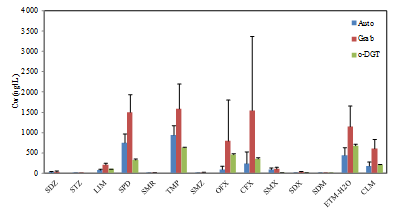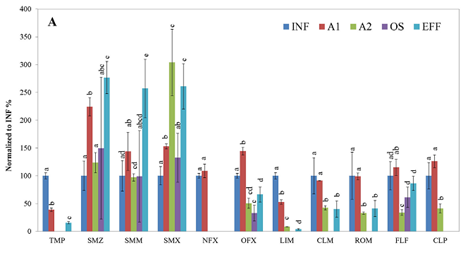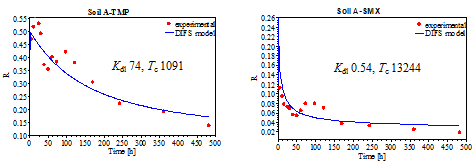The basic principle of passive sampling technique is that the analyte freely diffuses from one media (environmental matrix) to another (passive sampler). It does not require extra energy and also can pre-concentrate the target chemical(s), therefore passive sampling is a ‘green’ sampling approach. It is a cost-effective, simple and in situ sampling method compared to traditional active sampling, thus increasing attention to the passive sampling technique has been paid in the last few years. Dr Chang-Er Chen’s research focuses on the development and applications of passive sampling techniques, pioneered in the development of the Diffusive Gradient in Thin-films (DGT) for organic chemicals (o-DGT) and applications of o-DGT to understanding the environmental behaviours of organic chemicals.
(1) Development of DGT for organics (o-DGT)

Figure 1. Comparison of passive sampling technique -o-DGT with active sampling methods (Auto and Grab)
Laboratory experiments were conducted to understand the sampling processes of DGT for organics, it has been found that the adsorption on the diffusive layer and the varying diffusive boundary layer (DBL) were the key factors that affect this sampling processes. Then the o-DGT was developed by changing the diffusive and binding layer materials, clearly answered the question that if DGT can be used for sampling organics after about 20 years. These results have been published in the journal of environmental monitoring (Current name: ESPI) as an inside front cover. This is the first publication on o-DGT and the basic guideline for the following studies. Further field study confirmed that o-DGT is a cost-effective sampling approach by comparison with active samplings (including Grab and Automatic samplings). o-DGT can provide time-weighted averaged (TWA) concentrations, which is more reliable. The results from o-DGT were comparable with those from the ‘gold standard’method – automatic sampling (Auto) (Figure 1).
(2) Applications of passive samplers

Figure 2. the removal assessment of antibiotics in the WWTPs with o-DGT.

Figure 3. Desorption kinetics of TMP and SMX antibiotics in soil
Because of the thicker diffusive layer, passive sampling with o-DGT can reduce the effect of varying DBL on the sampling rate, results in lower uncertainties (< 25%) of the measured chemical concentrations. Then the o-DGT were used to 1) assess the removal and behaviour of antibiotics in the WWTPs, confirmed that antibiotics (particularly sulphonamide antibiotics) cannot be removed effectively in the WWTPs (Figure 2); 2) understand the sorption/desorption of antibiotics in soils, providing a new idea for research on the behaviour of organics in soils. It has been found that there were kinetic limitations of the desorption of antibiotics from soil particles. Taking SMX (Figure 3) as an example, its response time Tc is very large, meaning that it desorbed very slowly from the soil particles; while for TMP (Figure 3), a more hydrophobic antibiotics, probably it was the thermodynamics that controlled the desorption since it had a smaller Tc and larger labile distribution coefficient Kdl (meaning more labile fraction on the soil particles).
Selected publications:
(1) Chang-Er Chen, Hao Zhang and Kevin C. Jones. A Novel Passive Water Sampler for in situ sampling of antibiotics, Journal of Environmental Monitoring, 2012, 14, 1523-1530.